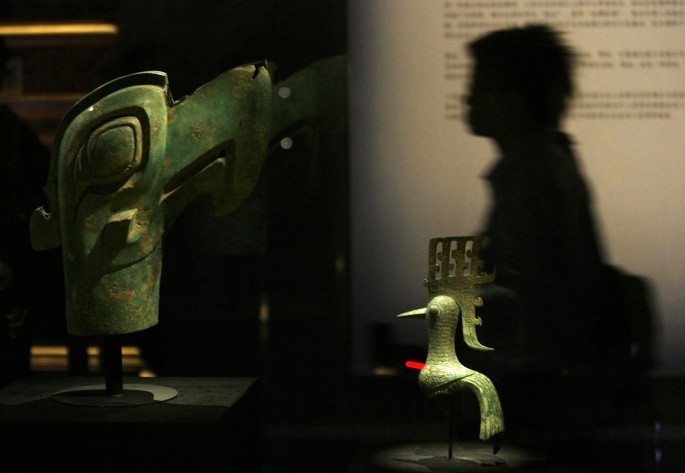More than 100 ancient Chinese bronze works are on display in southern California's Bowers Museum, and will then be showcased in other museums across the United States in the coming years, reported China Daily.
The exhibit called "China's Lost Civilization: The Mystery of Sanxingdui" showcases artifacts that could serve as a window into the mysterious life and culture of the inhabitants of Sanxingdui, an archeological site believed to have been a major Chinese city three millennia ago, said exhibit officials. The site is on the outskirts of what is now Sichuan Province.
The works include a bug-eyed bronze mask as big as a sofa, named "Mask with Protruding Eyes," and an anthropomorphic statue called "Standing Figure," among several others.
"You look at these figures and they're really unworldly," said Peter Keller, the museum's president.
"China is full of mysteries, but to me this is China's greatest mystery. Who were these people and where did they go?" Keller said.
Some of the relics were first discovered by a farmer in 1926. Separately in 1986 and 2001, more artifacts were found, intriguing the scholars regarding the mystery surrounding the lives of the Sanxingdui people who left the ancient city 350 years after making the bronze works.
"Wow, 1200 B.C. people are doing stuff like that and we think we're so technically evolved," said Suzanne Cahill, an authority on ancient Chinese civilizations and the exhibit's curator.
Evidence of bronze works at the time the relics were made is available; they were found 1,200 kilometers away from the site, in China's Central Plain. However, those other works were not as elaborate as the ones found in Sanxingdui, according to Cahill.
Found along with the bronze relics were Asian elephant tusks, which baffled researchers given that elephants were believed to have lived far away from the area, in Vietnam and in Southwest China. This led them to hypothesize that the inhabitants lived on still-unknown trade routes.



























